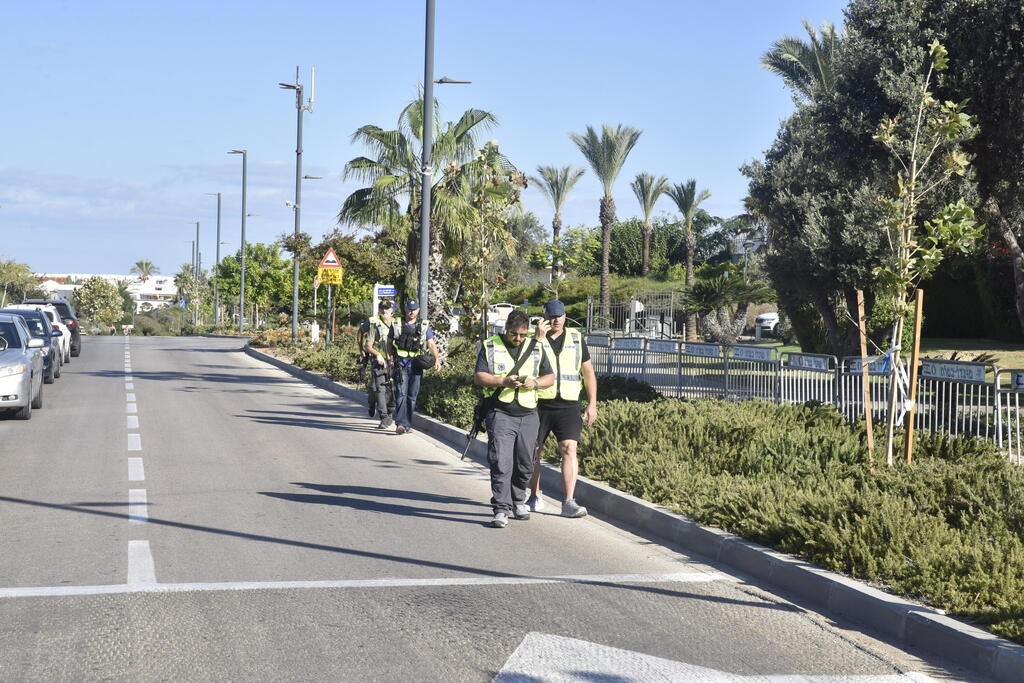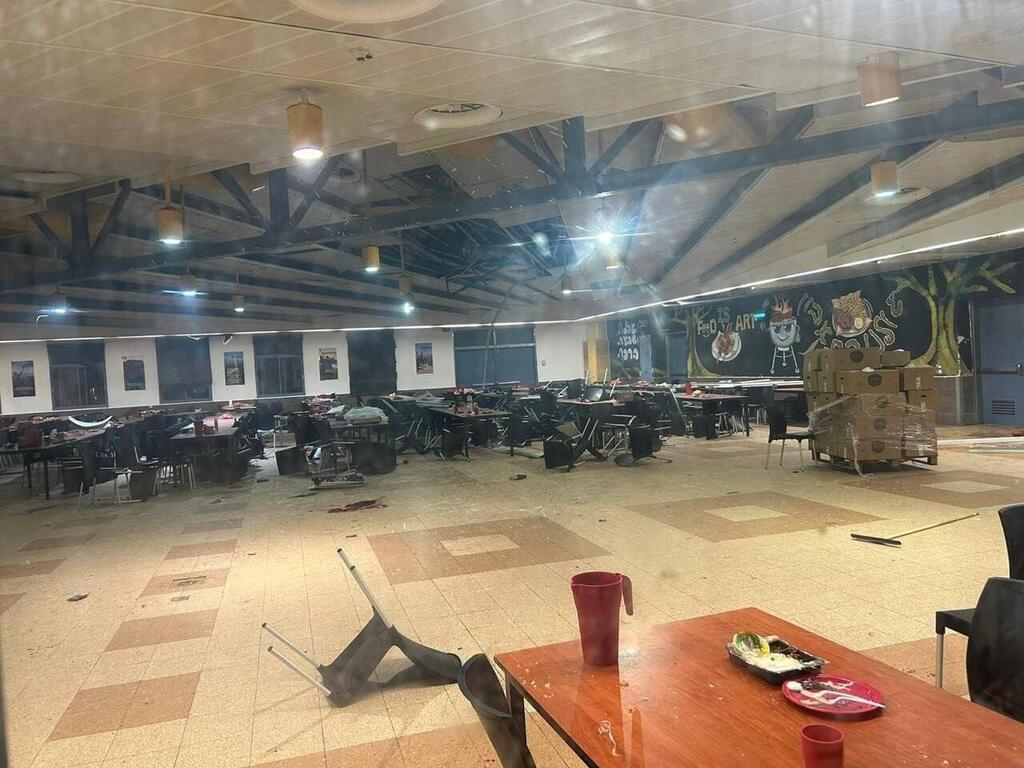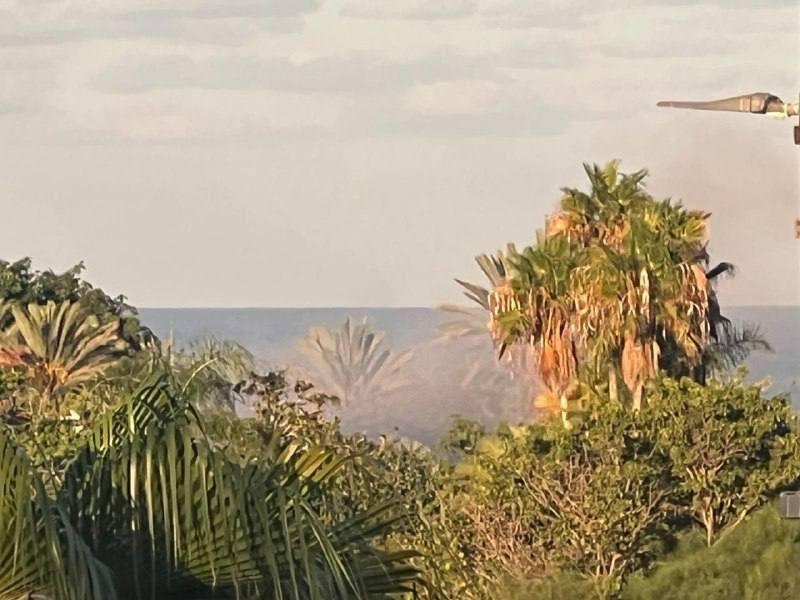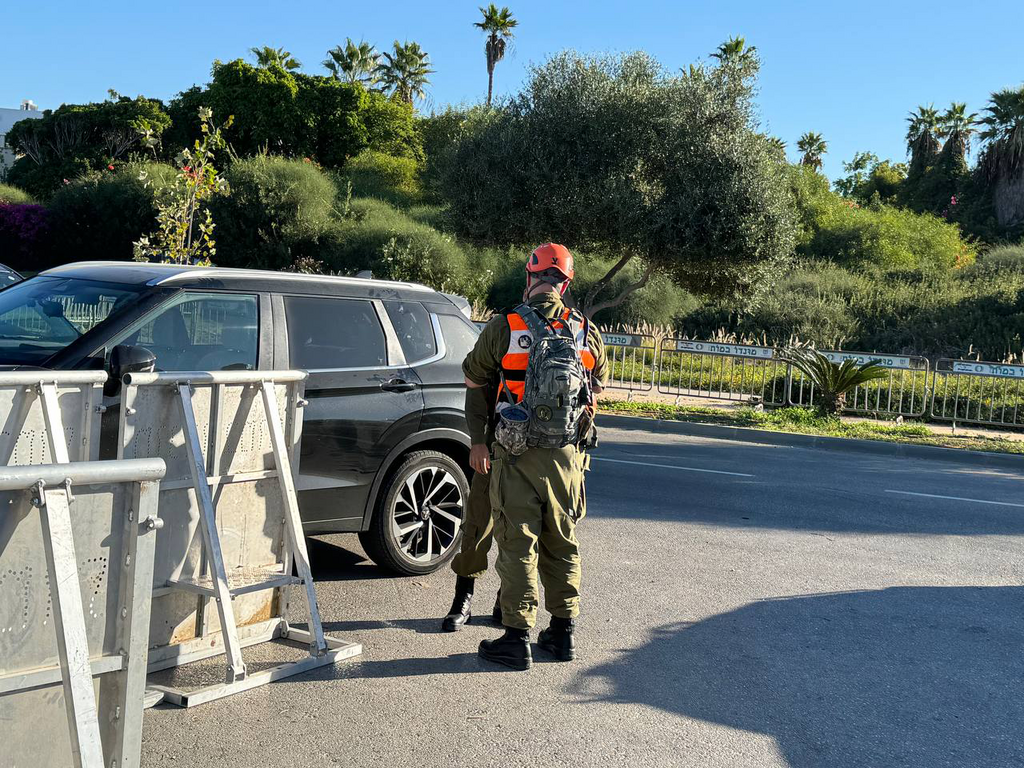Getting your Trinity Audio player ready...
Hezbollah is entering a "new and advanced phase of confrontation" with Israel, the Lebanese news agency Nour News, affiliated with the terrorist group, announced Friday. The escalation became evident overnight, particularly after a drone strike targeting the home of Prime Minister Benjamin Netanyahu in Caesarea on Saturday morning.
Hezbollah, which reportedly has more than 1,000 drones left in its arsenal, including explosive-laden ones, has ramped up the use of these aircraft, launching coordinated strikes on multiple Israeli targets—mainly military and government sites. Over the past 24 hours, there has been a noticeable decrease in rocket and missile attacks, with fewer and less accurate strikes hitting Israeli territory.
4 View gallery


The scene of the drone strike near Prime Minister Benjamin Netanyahu's home in Caesarea
(Photo: Sharon Tzur)
The group's latest strategy blends short-range rocket barrages with drone strikes, designed to overwhelm Israel’s detection and interception systems, particularly the Iron Dome. The goal is to confuse Israel’s defense systems while increasing the likelihood of interception debris falling in populated areas, even if the rockets themselves are intercepted.
This "triple saturation" approach—targeting detection systems, Iron Dome batteries and using interception debris as potential weapons—relies on sheer volume to maximize impact.
This concoction of rockets, missiles and drones—either alternately or simultaneously—poses significant challenges for Israel’s interception systems. Drones are primarily intercepted by aircraft, helicopters and other means, while rockets are intercepted by radar-based detection and fire control systems, such as Iron Dome. Though the technical explanation is complex, Hezbollah appears to be maximizing the effectiveness of its strikes through sheer volume.
Hezbollah drone detection by Israeli attack helicopter over northern Israel
The group concentrates rockets on a relatively small target area while launching drones in multiple directions to distract detection systems elsewhere. Although there have been few casualties and only moderate property damage, Hezbollah’s goal is to demonstrate to the Lebanese people and the Arab world that it remains resilient and capable of fighting back, thereby strengthening its position in ongoing negotiations regarding a future settlement in Lebanon.
The relative decline in rocket and missile attacks, alongside the sharp increase in explosive drone strikes, is likely due to new intelligence and operational capabilities developed by the Israeli Air Force.
These capabilities enable the swift targeting of rocket and missile launchers, both above and below ground, shortly after launch—whether they are mobile multiple-launch systems or stationary launchers hidden underground or in Lebanon's mountainous terrain.
This ability to quickly neutralize launchers and nearby rocket depots appears to be rapidly depleting Hezbollah’s high-quality arsenal. While short-range rocket fire remains somewhat effective in areas with unique topographical conditions, most salvos are intercepted, and the overall effectiveness of Hezbollah’s missile and rocket attacks has been diminishing.
In contrast, the number of casualties and direct hits from Hezbollah’s explosive drones has been rising. Recent examples include a Yom Kippur strike on a retirement home in Herzliya, where the drone likely targeted nearby intelligence facilities, and a deadly strike on a Golani Brigade training base earlier this week.
Hezbollah’s capacity to learn and adapt
Hezbollah still retains a significant arsenal of thousands of short- and medium-range rockets and missiles, including precision-guided ones, posing a persistent threat to Israel. However, the group may feel it is nearing the limit of what it can achieve through these means.
In contrast, the potential of explosive-laden drones—essentially small cruise missiles—remains largely untapped. While Hezbollah has spoken about deploying "drone swarms," it has yet to launch more than five drones simultaneously against a single target.
We can expect Hezbollah to ramp up its use of explosive drones, as they are harder to detect and intercept when flying low over the terrain, and they offer greater precision. Netanyahu’s home in Caesarea is a relatively easy target for Hezbollah, given its known and publicized location. A drone flying low over the sea from Lebanon could potentially reach it without being detected, and even if spotted, it would be difficult to intercept.
In Saturday morning's attack, Hezbollah’s drone operators were accurate in their planning, but fortunately, the drones did not hit or come close to Netanyahu’s family, who were not at their Caesarea home at the time.
4 View gallery


Hezbollah drone punches hole through ceiling of dining hall at Golani Brigade training base, killing four soldiers and wounding dozens
This wasn't a matter of luck but rather a reflection of Hezbollah’s operators and intelligence failing to execute effectively. Given Hezbollah’s capacity to learn and adapt, we must be better prepared for the next attempt.
This incident also highlighted a new phenomenon: sirens in certain areas without simultaneous alerts from the Home Front Command app. This is part of a new policy aimed at addressing the increased use of drones by Hezbollah, as well as by Shia militias from Iraq and Syria. The policy involves issuing warnings in areas with potential military or civilian targets even if the drones pose no immediate danger but might follow a projected flight path toward these locations.
This shift came after the deadly strike on the Golani base, where the drone evaded interception attempts by planes, helicopters and Iron Dome systems. The downside of this policy is the increased frequency of alerts, which forces residents in affected areas to seek shelter more often. On the bright side, there are promising developments in the pipeline for better detection, interception and the ability to strike drones at their launch sites.
Get the Ynetnews app on your smartphone:







